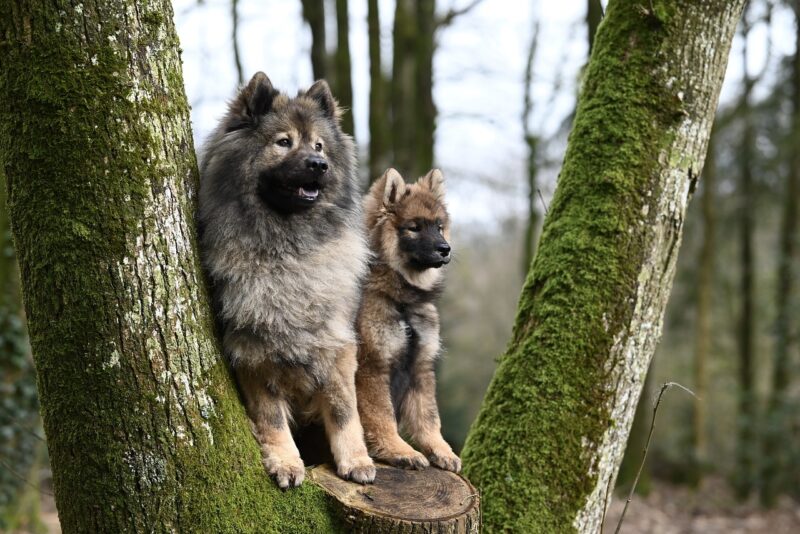The Rise of Mammals: How Ancient Animals Adapted After the Dinosaurs’ Extinction
November 14, 2024

The extinction of the dinosaurs about 66 million years ago marked a significant turning point in Earth’s history. This cataclysmic event cleared the path for mammals, which had been relatively small and inconspicuous throughout the Mesozoic Era, to rise and diversify into the dominant land animals we see today. In this article, we will explore how ancient mammals adapted to this dramatic shift in the environment, leading to the rich tapestry of mammalian life that now exists on our planet.
1. The Context of Mammals Before the Extinction
Before the mass extinction event, mammals were unwittingly living in the shadow of dinosaurs. These early mammals were small, nocturnal creatures that survived largely by escaping the notice of their reptilian counterparts. The Mesozoic Era was dominated by dinosaurs, which occupied nearly every ecological niche. Mammals were primarily small insectivores—think of shrew-like ancestors that scurried around the underbrush of prehistoric forests.
The evolutionary journey of mammals began during the Triassic period, but they remained inconspicuous until the Cretaceous period, where they coexisted with the towering reptiles. However, the extinction of the dinosaurs opened new opportunities for mammals to fill the void left behind.
2. The Great Extinction Event
The extinction event, likely caused by a combination of volcanic activity and an asteroid impact, led to the disappearance of approximately 75% of Earth’s species, including the majority of dinosaurs. The reasons for their extinction are manifold, including dramatic climate changes, loss of habitat, and the collapse of food chains.
As dinosaurs vanished, mammals faced a harsh and altered world. Many plant species that were adapted to the climate that suited the dinosaurs also disappeared. However, those mammals that survived had unique traits that allowed them to thrive in this new environment:
- Endothermy: Unlike reptiles, early mammals were warm-blooded, allowing them to regulate their body temperature. This adaptation let them thrive in varying climates and hunt during colder periods of the day.
- Increased Brain Size: After the extinction of the dinosaurs, mammals evolved larger brains relative to body size, enhancing their problem-solving capabilities and social behaviors.
- Diverse Diets: With the disappearance of many herbivorous species, mammals began to adapt dietary strategies. These included herbivory, carnivory, and omnivory based on the available resources.
3. Adaptive Radiation of Mammals
With the dinosaurs gone, mammals underwent what is known as adaptive radiation. This process involves the rapid evolution of different species to exploit various ecological niches, leading to an explosion of diversity. Here’s how this unfolded:
- Size Variation: Mammals saw an increase in size, leading to the emergence of various forms, from small rodents to the gigantic woolly mammoths. The lack of large predators enabled mammals to exploit different forms of locomotion and body structures.
- Ecological Roles: Mammals began to fill roles left vacant by extinct dinosaurs. Marsupials and placentals adapted to terrestrial, aerial, and aquatic environments, showcasing a wide variety of adaptations.
- Habitats Explored: From the fanged predator and herbivorous giants of the Cenozoic era to modern-day mammals, many species began to inhabit diverse habitats—from arid deserts to wet, lush forests.
4. Specific Examples of Evolutionary Adaptations
To understand the impact of the extinction more clearly, let’s take a look at specific mammalian adaptations that emerged post-extinction:
A. The Evolution of Large Herbivores
The extinction of large herbivorous dinosaurs gave rise to the emergence of massive mammals like the Paraceratherium, one of the largest land mammals ever to exist. These herbivores adapted both their size and grazing behavior to exploit the new flora that emerged.
B. The Emergence of Predators
As herbivorous mammals began to thrive, predators also evolved sophisticated hunting strategies. The introduction of carnivorous mammals, like the ancient sabertooths, showcased incredible adaptations for hunting, such as enhanced senses and powerful physiques.
C. Aquatic Mammals and Their Evolution
The uplift of aquatic environments enabled mammals like whales to adapt to life in water. The transition involved dramatic changes in physiology, leading to the development of streamlined bodies and specialized breathing adaptations.
5. The Role of Climate in Mammal Evolution
As mammals began to diversify, climate played an essential role in shaping their evolution. Fluctuating temperatures, seasonal changes, and the emergence of different habitats all influenced mammalian adaptability:
- Ice Ages and Survival Strategies: Mammals had to adapt to colder climates during glacial periods. Some species developed thick fur and fat layers for insulation, while others migrated south to warmer areas.
- Floral Changes and Co-evolution: Changes in plant life driven by climate affected herbivore feeding strategies and influenced predator-prey dynamics.
- Tropical Diversity: As the climate warmed, tropical regions flourished with diverse flora, leading to the evolution of a myriad of mammalian species adapted to these lush, warm environments.
6. The Legacy of Early Mammals
Today, the descendants of those early mammals occupy virtually every niche on Earth. They have become a cornerstone in modern ecosystems, and many human aspects, from companionship to agriculture, have strong ties to mammalian evolution.
Understanding the evolutionary journey of mammals since the extinction of dinosaurs provides valuable insights into how species adapt to changing circumstances. The extinction event, while devastating, was a catalyst for the diversification of mammals, leading to the complex and vibrant web of life that we observe today.
Conclusion
The rise of mammals symbolizes resilience and adaptability amidst one of Earth’s most drastic upheavals. As we navigate our modern world where many species face threats from rapid changes instigated by human actions, it is essential to draw lessons from how early mammals successfully adapted. Protecting biodiversity today echoes the very survival tactics that enabled mammals to thrive after the dinosaurs. We must ensure that we, too, can foster an environment where all forms of life can flourish, just as mammals did after the greatest extinction event Earth has witnessed.







